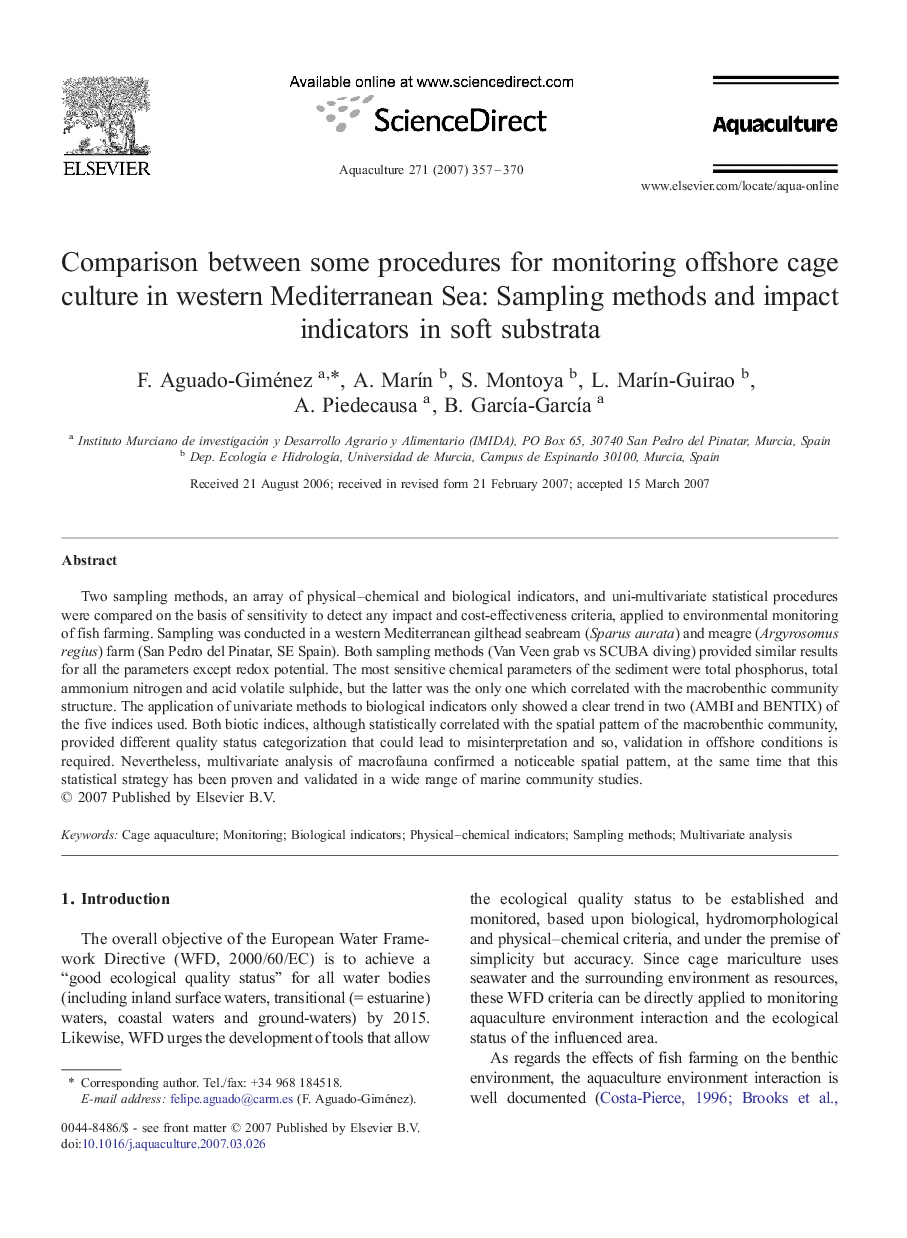| Article ID | Journal | Published Year | Pages | File Type |
|---|---|---|---|---|
| 2425160 | Aquaculture | 2007 | 14 Pages |
Two sampling methods, an array of physical–chemical and biological indicators, and uni-multivariate statistical procedures were compared on the basis of sensitivity to detect any impact and cost-effectiveness criteria, applied to environmental monitoring of fish farming. Sampling was conducted in a western Mediterranean gilthead seabream (Sparus aurata) and meagre (Argyrosomus regius) farm (San Pedro del Pinatar, SE Spain). Both sampling methods (Van Veen grab vs SCUBA diving) provided similar results for all the parameters except redox potential. The most sensitive chemical parameters of the sediment were total phosphorus, total ammonium nitrogen and acid volatile sulphide, but the latter was the only one which correlated with the macrobenthic community structure. The application of univariate methods to biological indicators only showed a clear trend in two (AMBI and BENTIX) of the five indices used. Both biotic indices, although statistically correlated with the spatial pattern of the macrobenthic community, provided different quality status categorization that could lead to misinterpretation and so, validation in offshore conditions is required. Nevertheless, multivariate analysis of macrofauna confirmed a noticeable spatial pattern, at the same time that this statistical strategy has been proven and validated in a wide range of marine community studies.
